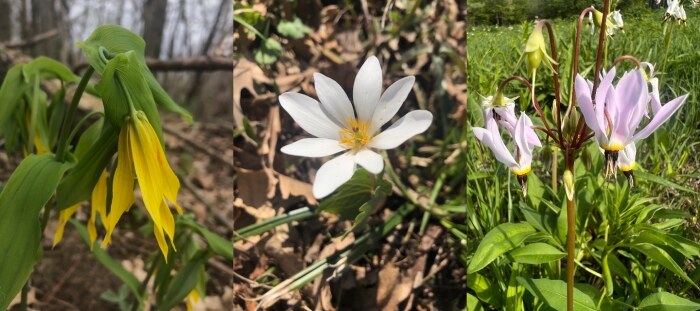The combination of a late spring and a busy legislative session delayed the return of Bleeding Heartland’s wildflowers series, but I’m excited to kick off the twelfth year with a lovely collection of photographs.
Johnson County Supervisor Lisa Green-Douglass supplied all of the images featured below. She took the pictures in April and May on various Johnson County conservation properties, including the Phebe Timber and Kent Park, as well as in other parts of the county, such as the Clear Creek Trail in Coralville.
I’m presenting the photos in roughly the order one would see these flowers, from the earliest to appear along trails or in wooded areas to those that bloom once spring is well underway.
If you have images to share or would like to write a guest post for the wildflowers series, please reach out to me. I welcome commentaries showcasing one species, especially a plant that hasn’t yet been featured here. But it’s also fun to see pictures of many wildflowers found in one location. Essays about transformations, whether in your back yard or some larger area, are always popular with readers.
The first two shots feature hepatica, which has a fascinating life cycle.


Next up: Bloodroot.

Dutchman’s breeches often come out early as well.

You can’t miss the pink lines on spring beauty flowers.


Most people call this flower white trout lily. Growing up, I knew it as dogtooth violet.

I love seeing Bellwort. We used to find a few of these every year in our yard, but they disappeared three or four years ago (a casualty of deer?).

Common blue violets often grow in people’s yards, but you’ll find them in high-quality habitats too.

Virginia bluebells are popular in gardens too.

It’s not easy to capture the flowers on wild ginger, which typically bloom under the large leaves.

I have a special attachment to Jack-in-the-pulpits, which inspired my journey to learn more about wildflowers.

These white flowers are cutleaf toothwort.

Prairie trillium is uncommon in Johnson County. Lisa found these plants at Phebe Timber.


The white flowers in front of the prairie trillium here are false rue anemone.

This yellow flower is a common cinquefoil, also known as Potentilla simplex.

This one’s a non-native: yellow rocket belongs in Eurasia, not North America.

I’ll close out with a couple of beloved native species. Wild blue phlox, also known as sweet William, is common throughout Iowa woodlands.

Shooting star is quite rare. I’ve only seen it “in real life” a handful of times. The flowers can be white or pink.

Lisa took this last picture of shooting stars in bloom on May 16 in Kent Park.



1 Comment
Thank you for these lovely photos
I missed most of the spring woodland show this year, and these photos make me determined to do better next year if at all possible. Meanwhile, I have been able to catch some early prairie flowers. Thank you, prairies.
I am relieved to see these photos, actually. I heard from a friend that deer overpopulation in Johnson County is pretty bad.
PrairieFan Fri 19 May 7:22 PM